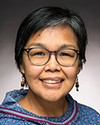That's a really excellent question.
I mentioned at the very beginning that this is a very unique exercise on global terms because, in fact, the relationship with the land has been central to all of the other modern treaties. Certainly in Nunavut, Yukon, Northwest Territories, even in urban first nations like the Tsawwassen First Nation, the land element is absolutely central.
The Métis folks, through no fault of their own, have been dispersed very widely over western Canada, pushed out of Red River through processes that our Métis colleagues know very well, but also then pushed even further, from Saskatchewan into the Northwest Territories, so you end up with a Métis population that's widely distributed. There are some Métis communities with land issues right close at hand, but many of the Métis have been pushed into all sorts of different corners.
It is a strength of the Métis nation, and I'll use the collective word here, that this community has not only flourished but actually gotten stronger over the last 50 to 100 years. Even though they have been scattered without access to control of the land, they have actually done an excellent job of mounting a political representation and putting political demands forward.
I don't know exactly what it looks like as part of the education system. I know it is a really exciting experiment and in the 21st century we can figure this out. It doesn't mean there won't be land issues to be dealt with, as our colleagues from Manitoba have already said, but, boy, this is an important sort of initiative.
The whole business of that distributed population is one that's central to all indigenous peoples. The folks from Nunavut have moved down in large numbers to Ottawa and Montreal, and you figured out systems for incorporating those individuals in your governance and in your administration. I think this is a bold experiment and one we should find a way to embrace as best we can.
Thank you.






